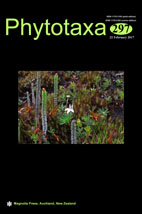Abstract
Recent molecular studies have contributed significantly to our understanding of the systematics and phylogeny of Boraginaceae. A morphologically interesting placement within this plant family is the sister-group relationship between two Himalayan genera of dwarf annuals (Lasiocaryum and Microcaryum) and the genera Trichodesma and Caccinia, a clade that is sister to the remainder of tribe Cynoglosseae. This study investigates the systematics, taxonomy and relationships of Lasiocaryum and Microcaryum and compares it with other, morphologically similar genera, Setulocarya and Chionocharis. Together, Lasiocaryum, Microcaryum, Setulocarya and Chionocharis include seven species as currently recognized. However, morphological studies show that the monotypic Setulocarya should be treated as a synonym of Lasiocaryum munroi while L. ludlowii is best placed within L. trichocarpum, leading to a total of five species within this clade. Sequences from three chloroplast markers and one nuclear region generated for four of the five species here recognized confirm the monophyly of the clade Chionocharis [Microcaryum + (Lasiocaryum trichocarpum + L. munroi)]. This exclusively Himalayan lineage is morphologically homogeneous, and consists of tiny annual herbs and perennial cushion plants with small, turbinate to oblong-ovoid, pubescent or rugulate nutlets.

